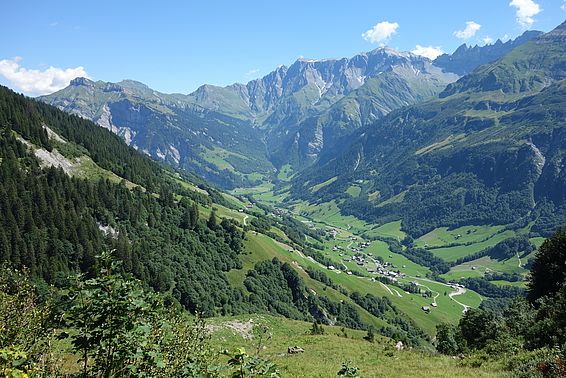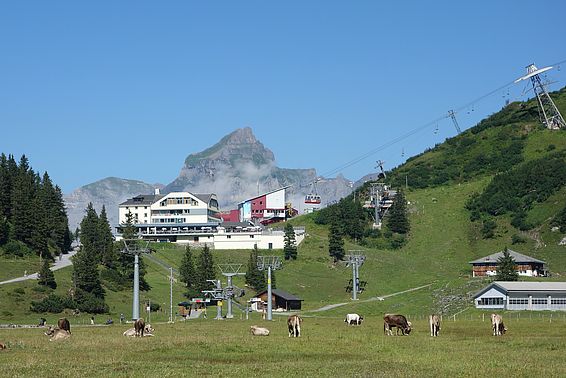28.11.2018 | News WSL
New Regional Policy, Regional Nature Parks and much more: the development of the regions is a central pillar of policy in Switzerland. But how do regional development processes really work? And how could they be better supported? Researchers at the Swiss Federal Institute for Forest, Snow and Landscape Research (WSL) provide information on this in a new fact sheet.

It is a side effect of federalism: many major tasks, such as regional transport planning or settlement development, cannot be accomplished by municipalities alone. This is why many municipalities form larger associations, so-called regional development agencies. In the last ten years, many such associations have been newly founded or restructured in Switzerland. These include, for example, newly created regional nature parks, but also associations of municipalities which implement the new Regional Policy of the Federal Government, such as the Regio Frauenfeld, the Regio Oberaargau or LuzernPlus.
An important motivation for this are various federal regional policy programmes, such as the New Regional Policy (NRP) or the parks policy. Both have been in force for 10 years and aim to promote rural, mountain and border areas by supporting regional products, creative ideas and sustainable projects. By strengthening the competitiveness of these regions, they should be able to cope better with structural change.
Regional development agencies assume a variety of tasks: they carry out strategic planning processes in the regions and interconnect people and institutions. They also support resourceful people in the implementation of project ideas and arrange financing. In addition, they coordinate different stakeholders in order to jointly initiate regional development processes.
Examples of successful regional development projects include the "Holzweg Thal" in the Thal Nature Park, which gives visitors an artistic and playful experience of the regional timber industry, or the "Picknick und Genuss" (picnic and delight) offer by the Regio Frauenfeld. It provides a special map for excursions in the region, on which picnic sites and farm shops with regional specialities are marked as well as regional hiking and cycling trails.
How regional development processes can succeed
Regional development agencies are often organised as associations whose members are primarily municipalities. In addition, private stakeholders such as tourism and business associations, private companies as well as interested persons from the population can also become members. The multitude of stakeholders with diverse concerns, interests and ideas complicates the promotion of regional development processes.
Researchers at the Swiss Federal Institute for Forest, Snow and Landscape Research (WSL) have investigated how joint regional initiatives can nevertheless function and deliver satisfactory results. They interviewed 33 experts in six case regions on the obstacles that can arise when developing and implementing development strategies and projects. They now present the results and their recommendations in a fact sheet of the Swiss Academies of Arts and Sciences (swissacademies).

Regional players and their actions are crucial
The implementation of regional development strategies and thus also the course of regional development processes depend to a large extent on the support provided by regional players. Like any association, a regional development agency functions only as well as it is supported by its members, who must be willing to engage in a regional way of thinking.
"In addition, regional development agencies need sufficient capacities and competencies to support and interconnect potential project leaders from the very start," says Yasmine Willi, who conducted this study in her doctoral thesis under the supervision of Marco Pütz.
Regional development strategies with concrete and above all binding goals and implementation measures have also proved helpful. "A lot of the time, much commitment and financial resources go into the development of regional development strategies, but without sufficiently planning their implementation," says Willi. In addition, if the strategy consists of rather vague visions, such as "strengthening the regional economy" or "creating attractive jobs", no one usually feels responsible for implementing them.
Three tips for success
The authors of the factsheet draw attention to three core messages. Firstly, tasks should be clearly distributed within the regional development agencies and the parties involved should have the necessary decision-making powers. Secondly, it is very important to anticipate and plan concrete implementation as early as the development of regional development strategies. And thirdly, all partners in spatial development in Switzerland should optimally coordinate their planning and measures.
Contact ¶
Links and documents ¶
Original publication:
Willi Y, Pütz M (2018) Governance of regional development: How can regions unlock their potential? Swiss Academies Factsheets 13 (3),1-6.
- Download online here. (pdf)
Copyright ¶
WSL and SLF provide image and sound material free of charge for use in the context of press contributions in connection with this media release. The transfer of this material to image, sound and/or video databases and the sale of the material by third parties are not permitted.
